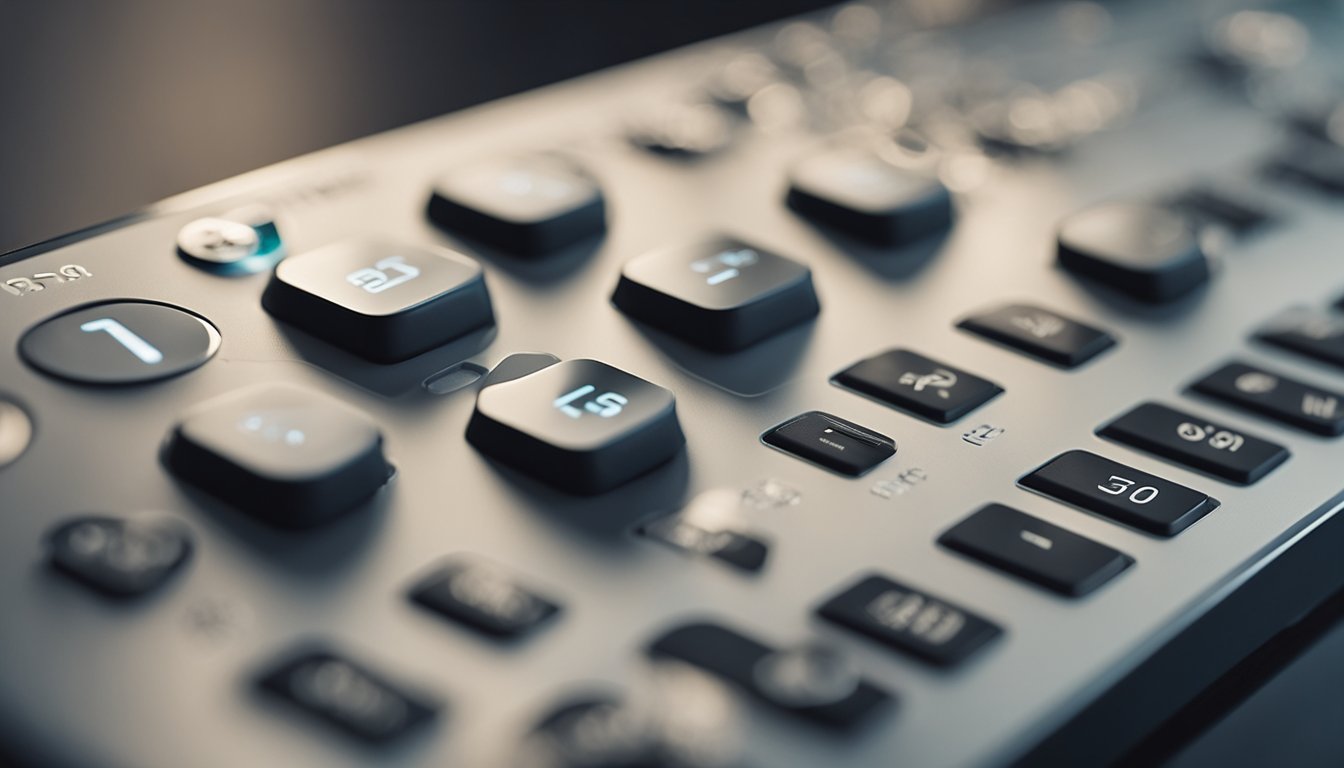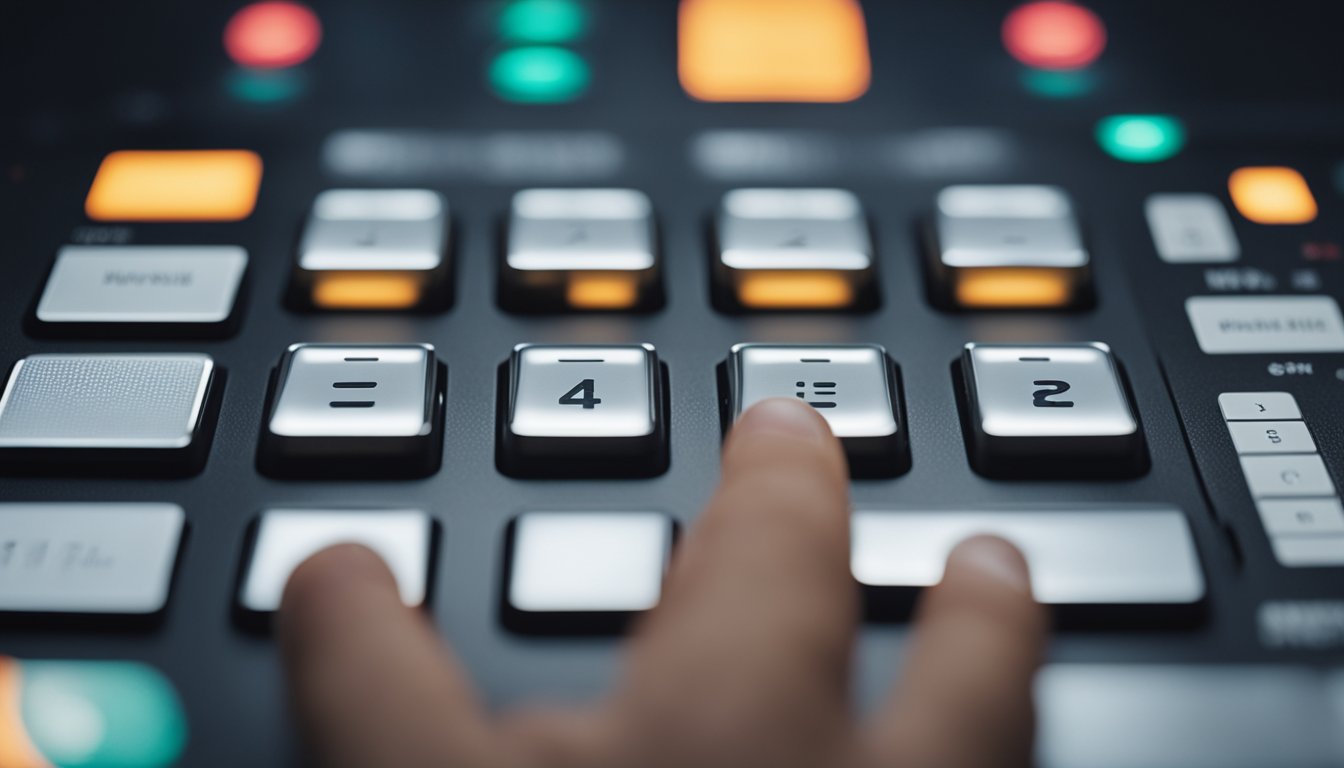Contact
Write to Us And We Would Be Happy to Advise You.
Do you have any questions, or would you like to speak directly with a representative?
By peter
A keypad membrane switch is a type of switch that is commonly used in consumer electronics, industrial control systems, and medical devices. It consists of a thin, flexible membrane that is printed with conductive material and overlaid with a graphic overlay. When a user presses a button on the overlay, it pushes down on the membrane, which makes contact with the underlying circuitry and activates the switch.

Keypad membrane switches are popular because they are inexpensive, easy to use, and reliable. They are also customizable, which means that manufacturers can create a switch that is tailored to their specific needs. For example, they can choose the number of buttons, the layout of the buttons, and the graphics on the overlay. Additionally, keypad membrane switches are resistant to water, dust, and other environmental factors, which makes them ideal for use in harsh conditions.

A keypad membrane switch is a type of switch that is commonly used in electronic devices to provide user input functionality. It is a thin, flexible membrane that contains a circuit printed on it, which includes the contacts for each key on the keypad. When a key is pressed, the membrane deforms, allowing the contact on the membrane to make contact with the circuit below it, registering the keystroke.
A typical keypad membrane switch consists of several layers of materials laminated together. The layers include:
The operating principle of a keypad membrane switch is based on the principle of a closed circuit. When a key is pressed, the top layer of the keypad, which is the graphic overlay, deforms and touches the circuit layer below it. This completes the circuit, allowing the electrical current to flow through the contact and register the keystroke.
Keypad membrane switches are preferred over traditional switches because they are more cost-effective, durable, and easy to customize. They are widely used in various electronic devices such as calculators, remote controls, medical equipment, and industrial control panels.

When designing a keypad membrane switch, there are several design considerations to keep in mind. A well-designed membrane switch can enhance the user experience by providing a reliable and responsive interface. Here are some key factors to consider:
The material selection is an essential consideration when designing a membrane switch. The overlay material should be durable and resistant to wear and tear. Common materials used for overlays include polyester, polycarbonate, and acrylic. The adhesive layer should also be chosen carefully to ensure that it adheres well to the substrate and the overlay.
The circuit layout is another critical design consideration. The circuit should be designed to ensure that there is no interference between the different conductive paths. The layout should be optimized to minimize the resistance of the circuit and ensure that the switch is responsive and reliable. A well-designed circuit layout can also help to reduce the cost of the switch.
Tactile feedback is an essential consideration when designing a membrane switch. The switch should provide a tactile response to the user when it is activated. This feedback can be achieved through the use of embossing or by using a metal dome. The tactile feedback should be consistent across all keys and should be designed to provide a comfortable and responsive user experience.
In summary, when designing a keypad membrane switch, it is essential to consider the material selection, circuit layout, and tactile feedback. By keeping these factors in mind, you can create a reliable and responsive switch that enhances the user experience.
Manufacturing a keypad membrane switch involves several steps, including printing, cutting, and assembly.
The first step in the manufacturing process of a keypad membrane switch is printing. The printing process involves printing the circuitry and graphics onto a polyester layer. The circuitry is printed using conductive ink, while the graphics are printed using non-conductive ink. The printing process is crucial as it determines the accuracy and durability of the keypad membrane switch.
The second step in the manufacturing process is cutting. The printed polyester layer is then cut into the desired shape using a die-cutting machine. The die-cutting machine uses a sharp die to cut the polyester layer into the desired shape. The cutting process is essential as it determines the final shape and size of the keypad membrane switch.
The final step in the manufacturing process is assembly. The printed and cut polyester layer is then assembled with other layers, including adhesive layers and spacer layers. The adhesive layers are used to bond the keypad membrane switch to the device, while the spacer layers are used to provide a gap between the layers. The assembly process is crucial as it determines the functionality and durability of the keypad membrane switch.
In conclusion, the manufacturing process of a keypad membrane switch involves several steps, including printing, cutting, and assembly. Each step is crucial in determining the accuracy, durability, and functionality of the keypad membrane switch.
Keypad membrane switches are widely used in various industries for their versatility, durability, and cost-effectiveness. They are a popular choice for applications requiring a user interface that is easy to operate, compact, and reliable. In this section, we will discuss some of the common applications and uses of keypad membrane switches.
Keypad membrane switches are commonly used in various consumer electronics such as remote controls, calculators, and mobile phones. Their low profile design and tactile feedback make them an ideal choice for these applications. They are also used in audio and video equipment, including home theater systems, amplifiers, and DVD players.
Keypad membrane switches are widely used in industrial control panels, where they provide a reliable and durable interface for controlling machinery and equipment. They are used in a variety of industries such as manufacturing, automotive, and aerospace. They are particularly useful in applications where the control panel needs to be sealed against dust, moisture, and other contaminants.
In addition to the above applications, keypad membrane switches are also used in medical equipment, laboratory instruments, and military applications. They are popular for their versatility, durability, and ease of use. They can be customized to meet specific requirements, including the number and layout of keys, the type of tactile feedback, and the type of backlighting.
Overall, keypad membrane switches are a reliable and cost-effective solution for a wide range of applications. Their versatility and durability make them an ideal choice for applications where a user interface needs to be compact, easy to operate, and reliable.
One of the biggest advantages of keypad membrane switches is their durability. Membrane switches are made of flexible materials and have no moving parts, which means they are less prone to wear and tear. They can withstand millions of actuations without losing their functionality. This makes them ideal for applications that require frequent use, such as industrial equipment, medical devices, and consumer electronics.
Keypad membrane switches are also cost-effective. They are cheaper to manufacture than mechanical switches, which require more complex components. This makes them a popular choice for budget-conscious manufacturers. Additionally, membrane switches can be printed on a variety of substrates, including plastic, metal, and glass, which further reduces manufacturing costs.
Another advantage of keypad membrane switches is their customization potential. Membrane switches can be designed to meet specific customer requirements, including size, shape, and functionality. They can also be printed with custom graphics, logos, and icons. This makes them ideal for applications that require branding or user interface design, such as consumer electronics and medical devices.
Keypad membrane switches are also resistant to environmental factors such as moisture, dust, and temperature fluctuations. They can be sealed to prevent the ingress of water and other contaminants, which makes them ideal for outdoor and industrial applications. Additionally, membrane switches can operate in a wide range of temperatures, which makes them suitable for use in harsh environments.
Despite their many advantages, keypad membrane switches also have some limitations. For example, they may not provide the same tactile feedback as mechanical switches, which can make typing less comfortable. Additionally, they may not be suitable for applications that require high-precision actuation, such as gaming keyboards. However, for many applications, the advantages of keypad membrane switches far outweigh their limitations.
Do you have any questions, or would you like to speak directly with a representative?